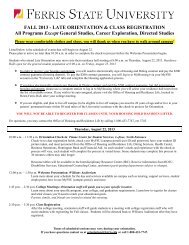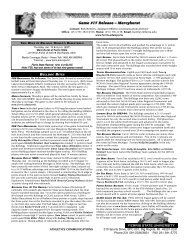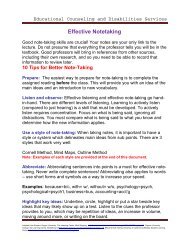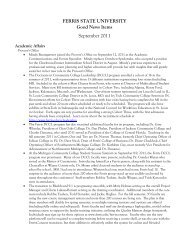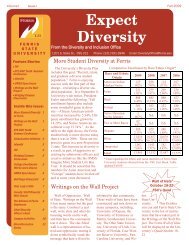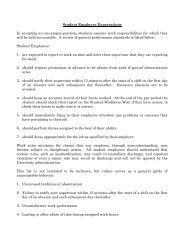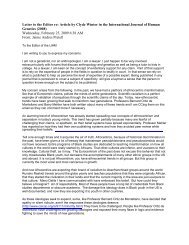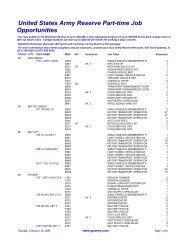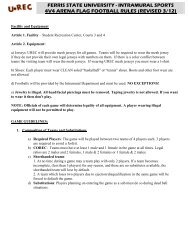Daniel Gasman - Ferris State University
Daniel Gasman - Ferris State University
Daniel Gasman - Ferris State University
You also want an ePaper? Increase the reach of your titles
YUMPU automatically turns print PDFs into web optimized ePapers that Google loves.
were often interwoven with the aesthetic tendencies that one typically associates with anti-positivistic<br />
Symbolism, as well as with the artistic and literary expressions of the avant-garde modernist rebellion<br />
against scientific positivism in the late nineteenth and early twentieth centuries. 40<br />
Haeckelian Monism revitalized for the modern world the mystical Monism of the pre-Socratics, the<br />
hermeticism of Bruno, the pantheism of Spinoza, the romanticism of Goethe, and the idealism of the<br />
German Naturphilosophen. It was a movement that was identifiable, not so much with the traditions of<br />
conventional positivism, materialism, and rationalism that were reflected in the superficial materialistic<br />
images of Haeckelian Monism which have been mentioned by Gliboff, but rather, and more importantly,<br />
in the astonishing popular recrudescence of age-old hermeticism as a viable intellectual tradition.<br />
Apparently unknown to Gliboff, Haeckel had a seminal influence on the growth of German, Italian,<br />
Scandinavian, Russian, and French theosophy and occultism, and his religion of Monism itself can be<br />
viewed as an explicit expression of theosophical thought. In addition, Haeckel’s Monism was<br />
instrumental in initiating some of the greatest triumphs in modernist literature, painting, sculpture, music,<br />
and architecture – and one could add that his ideas became vitally important sources for the crystallization<br />
of Freudian and Jungian psychoanalytical theory and Marxist concepts of totality and scientific<br />
determinism, ways of thinking that often tested the boundaries of purely vitalistic interpretations of nature<br />
and history.<br />
Gliboff asserts that ‘Haeckel made it clear that the greatest attractions of Darwin’s theory for him<br />
were its freedom from teleology and divine intervention, and its promise of substituting scientific<br />
understanding for superstitious wonderment.’ 41<br />
But such statements of Haeckel are misleading. Gliboff<br />
fails to examine Haeckel’s self-proclaimed metaphysical intentions, his constant reiteration that his<br />
40<br />
For example, Gliboff might have taken into account Hannah S. Decker, ‘The Lure of Nonmaterialism in Materialist<br />
Europe: Investigations of Dissociative Phenomena, 1880-1919,’ in Jacques M. Quen, ed, Split Minds/SplitBrains,<br />
New York: NYU Press, 1986, 31-62.<br />
41<br />
Gliboff, Bronn, Haeckel, 159.<br />
20



